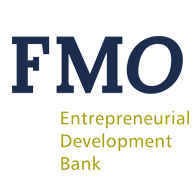


The finance for nature market is growing – from US$133 billion in 2021 to US$154 billion in 2022. But the vast majority of this investment comes from public sources.
Private sector investment is urgently needed to double that amount and meet the US$384 billion target that UN Environment Programme says is needed by 2025 to meet the Paris agreement targets, halt biodiversity loss and reach land degradation neutrality.
The need for scaling up investment in nature is clear and pressing, and this is being met with growing interest from investors. However, one of the challenges in growing the market for forestry and sustainable land use (FSLU) and other nature-based solutions (NbS) continues to be identifying and developing bankable projects and connecting them with the right financiers. As FSLU is still a nascent investment area, there is not yet an off-the-shelf pipeline for investors entering the space. There are no standardized business models or asset classes which investors are familiar with, meaning that fund managers must do the hard work of identifying early-stage opportunities for investment, screening them and developing them into investible propositions. This process is hugely time and resource-intensive and remains a significant barrier to capital deployment.
Even for fairly large scale funds in the sector, the time and resources needed for pipeline development is hard to accommodate within a traditional fund structure.
Shared challenges to developing a bankable pipeline of FSLU projects include high transaction costs; ticket sizes; untested business cases, especially with regards to scalability; measuring and communicating impact propositions; implementation of robust yet manageable E&S due diligence processes; and lack of familiarity working within local regulatory contexts, especially in low and middle-income countries (LMICs).
On May 11th, FMO joined the Partnerships for Forests (P4F) and Mobilising Finance for Forests (MFF) investor forum in London to exchange learnings drawn from the experience of public, private and blended finance for nature. During a dedicated session, several experts working on developing bankable projects for the FSLU and NbS sectors gave presentations on their own experiences of pipeline development.
The panelists shared a variety of different approaches to sourcing and developing pipeline, speaking to the pros and cons of inbound (open calls) versus outbound (targeted, solicited) sourcing strategies, and incubation versus acceleration models of growing climate and nature-positive projects, as well as different funding structures including pure grants, reimbursable grants, investment/acceleration models, interest-free loans, and revolving fund models.

Although models and approaches across the panel differed, they share a goal of helping to accelerate private sector investment in nature at scale. From this, several common themes emerged. The importance of investing in on-the-ground networks and knowledge both as a pipeline source and a quality assurance mechanism was a recurring pattern across all approaches. Working within local regulatory contexts is a shared challenge, which can be overcome by creating awareness and engaging with local government and associations to smooth project development and source new promising opportunities.
|
The three components of successful technical assistance to bring a project to bankability are: (1) a good understanding of socio-economic dynamics on the ground; |
The role of dedicated technical assistance, both pre- and post-investment, is key to bring propositions to bankability. Delivery does not need to be limited to just public and blended finance – private financiers have a role to play as well. Balancing speed and scalability is another challenge identified in pipeline development, but having a structured set of investment criteria introduced systematically throughout the assessment process may help to narrow down pipeline in a time-efficient manner and reduce transaction costs. However, in addition to these models, there is a need for project developers to engage with the investment community from the earliest stages to better communicate and educate commercial investors on the particularities of investing in FSLU and NbS and their unique risk-return profiles, E&S risk management systems, impact measurement and more
"Matching investees with investor needs, especially on E&S due diligence requirements, can sometimes feel like fitting a square peg in a round hole. We need to bring in investor guidance earlier in the process, but as a pipeline developer, we also need to manage the expectations of investors to the realities on the ground."

Visit our community platform for our latest knowledge products.